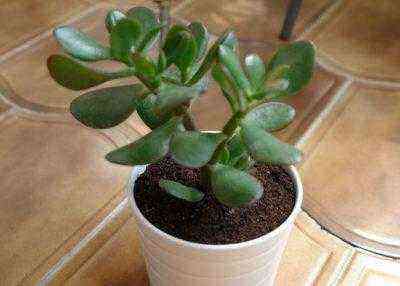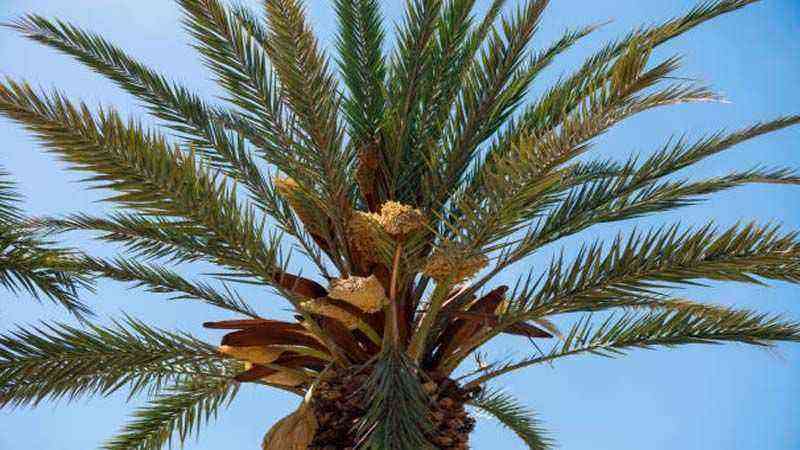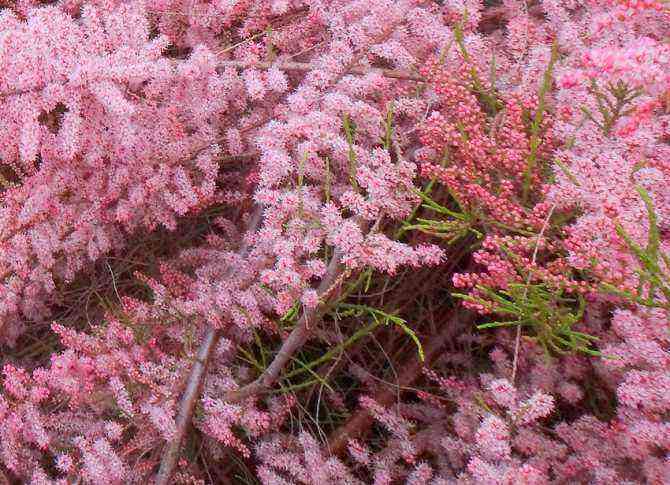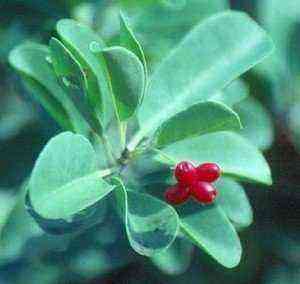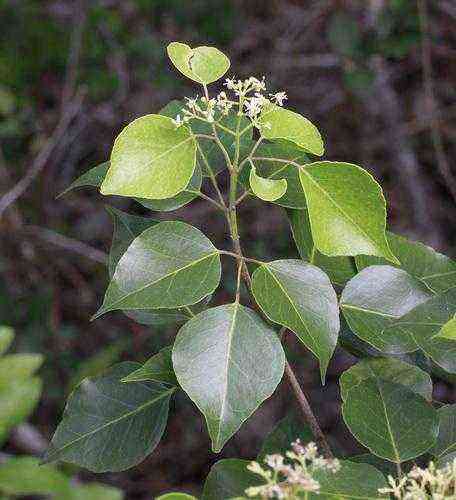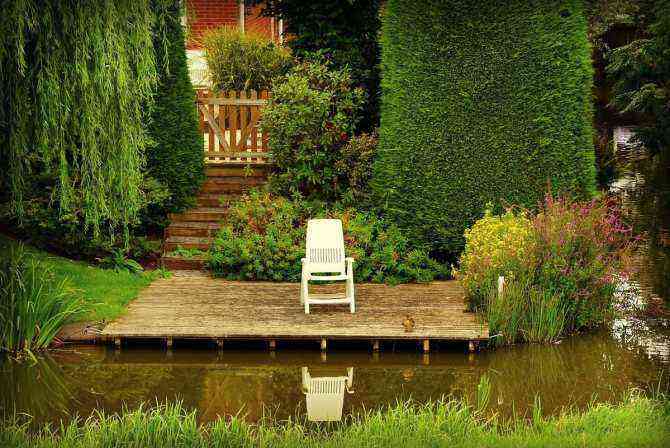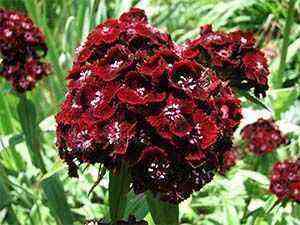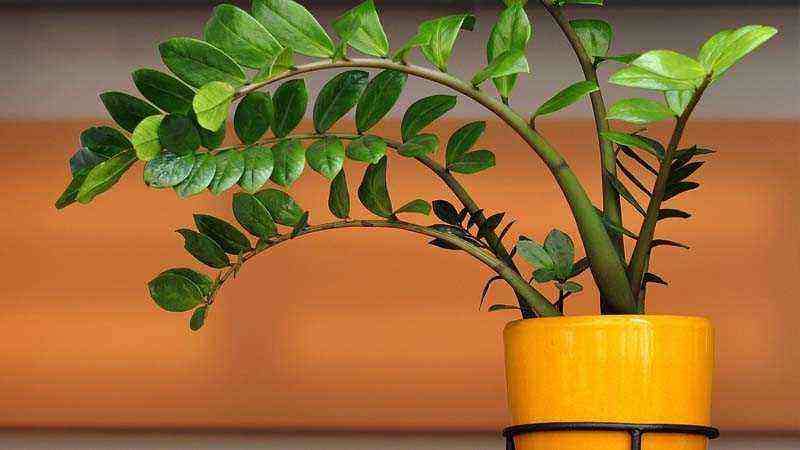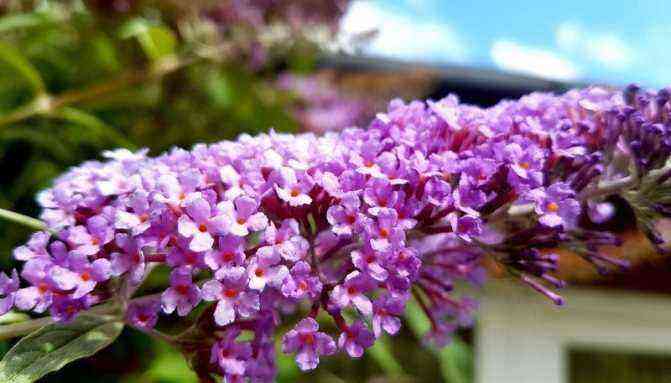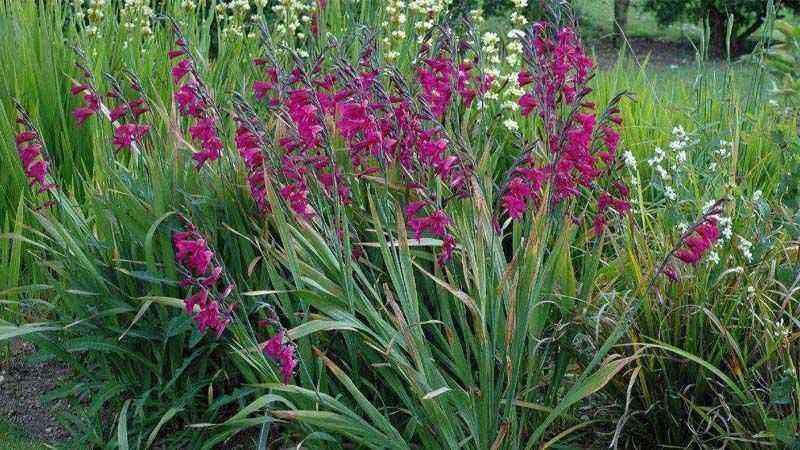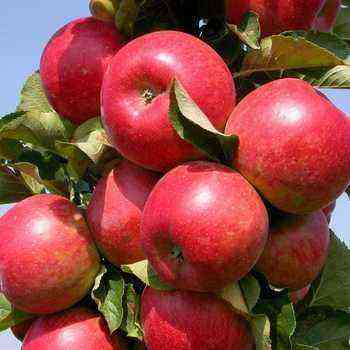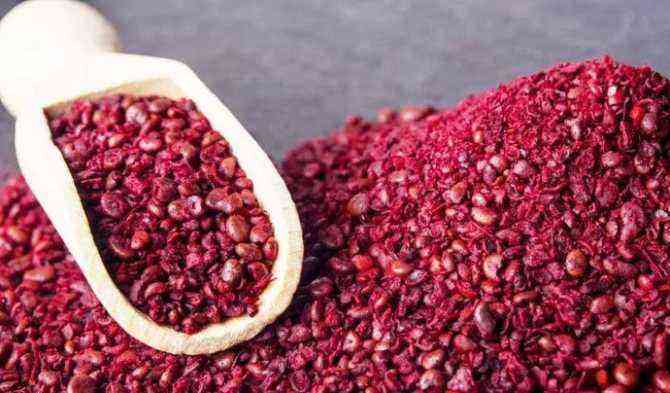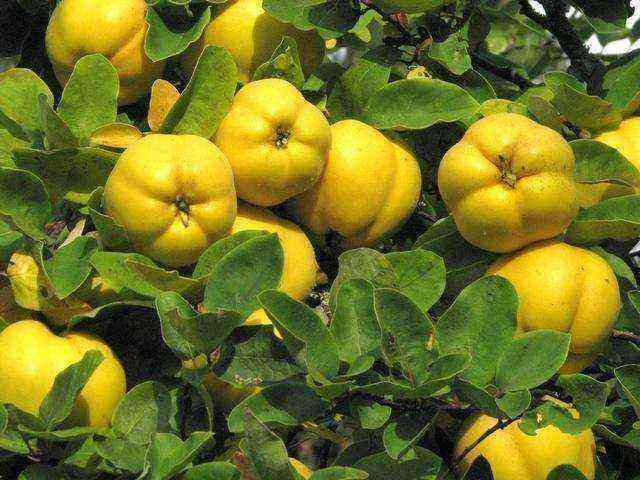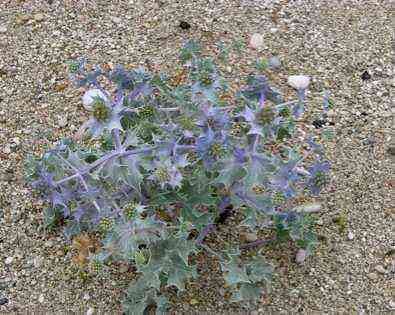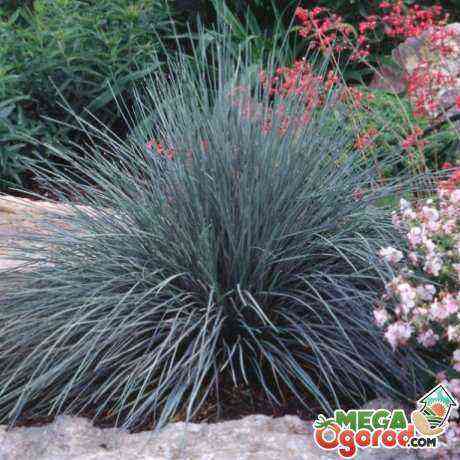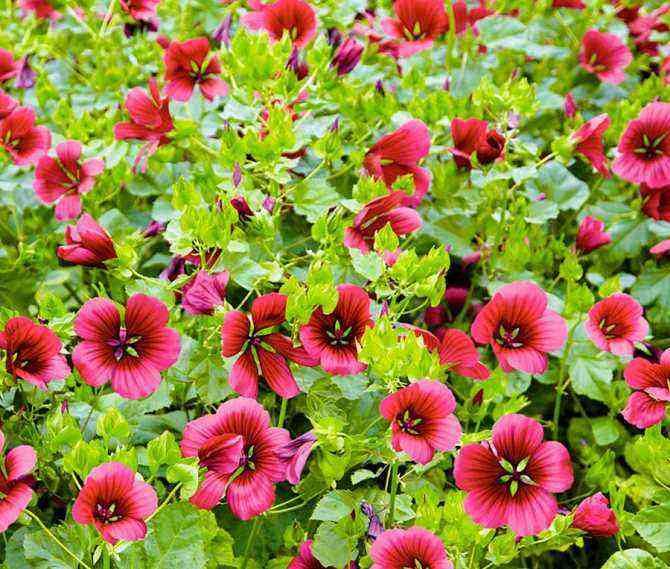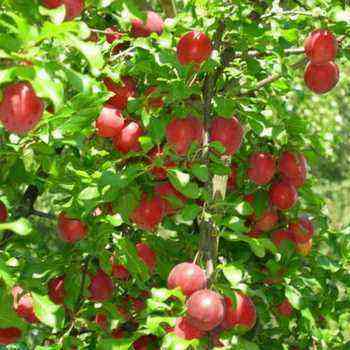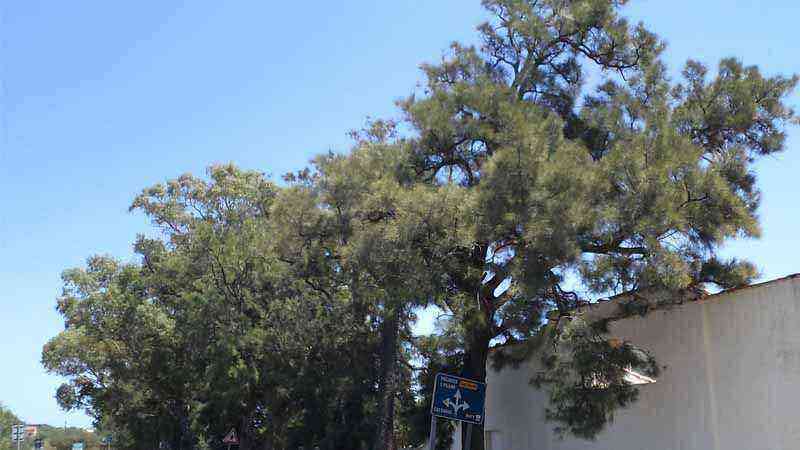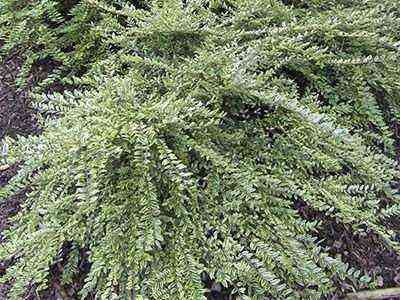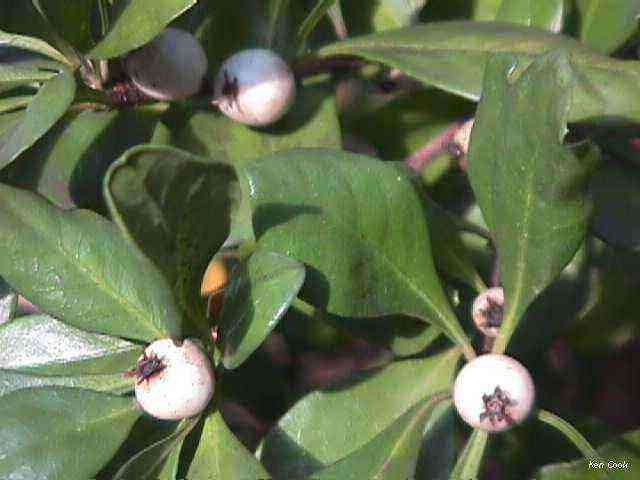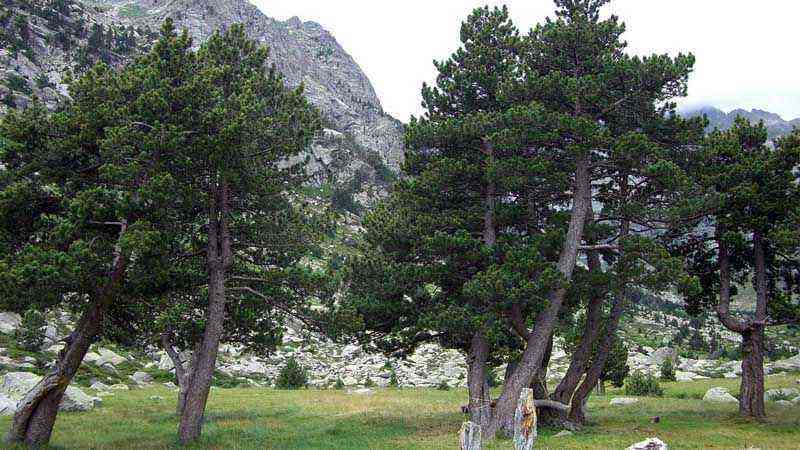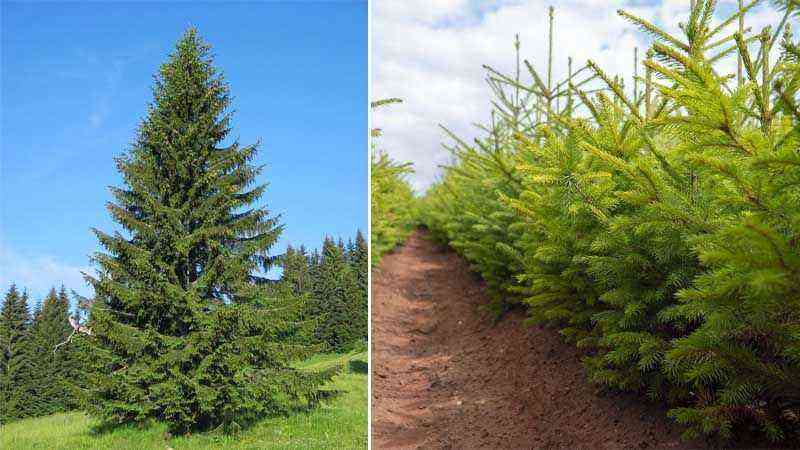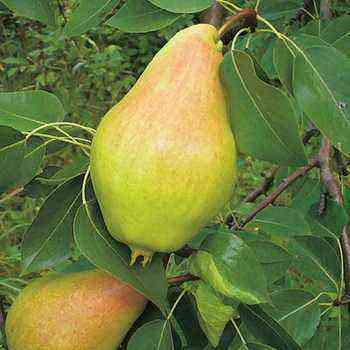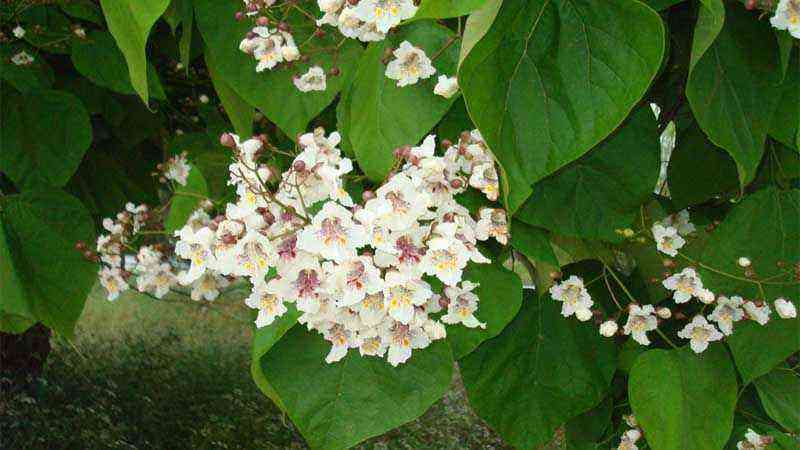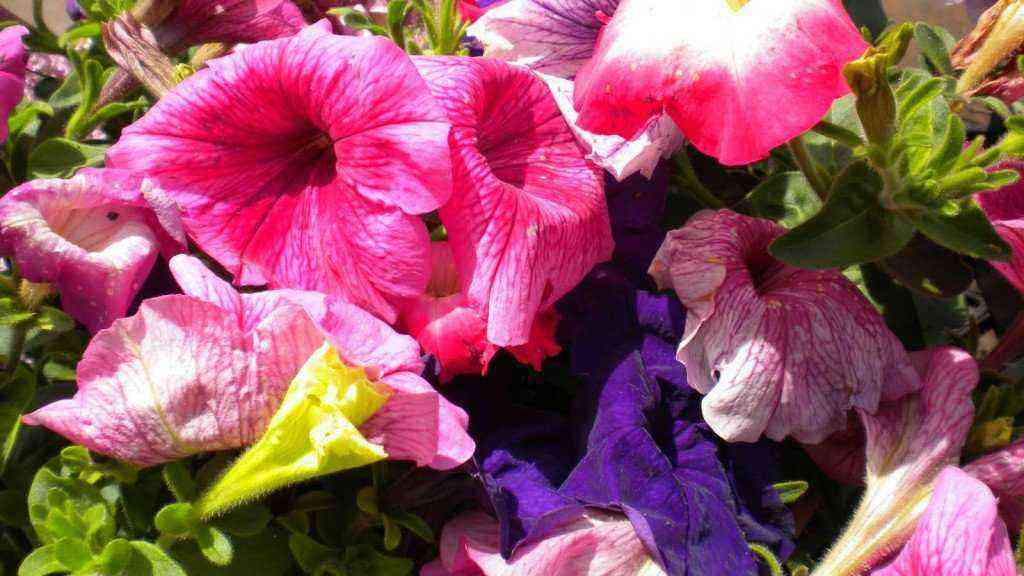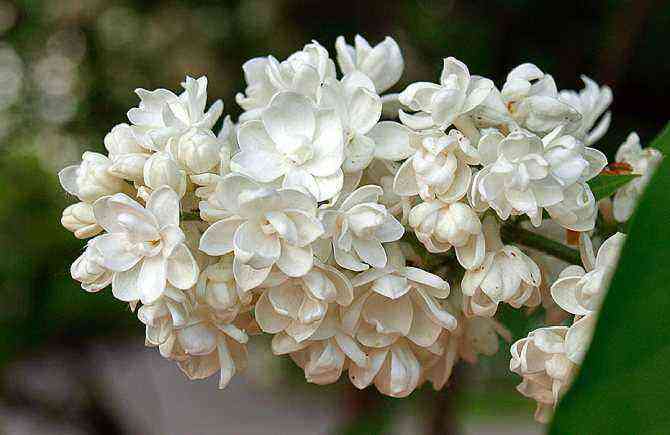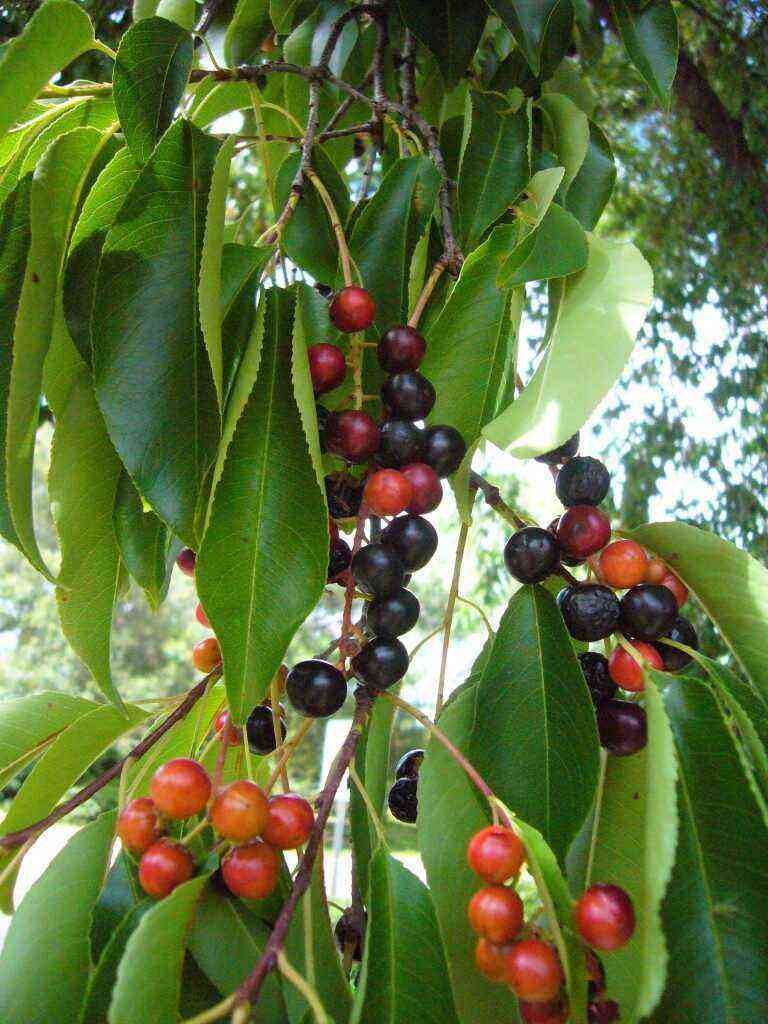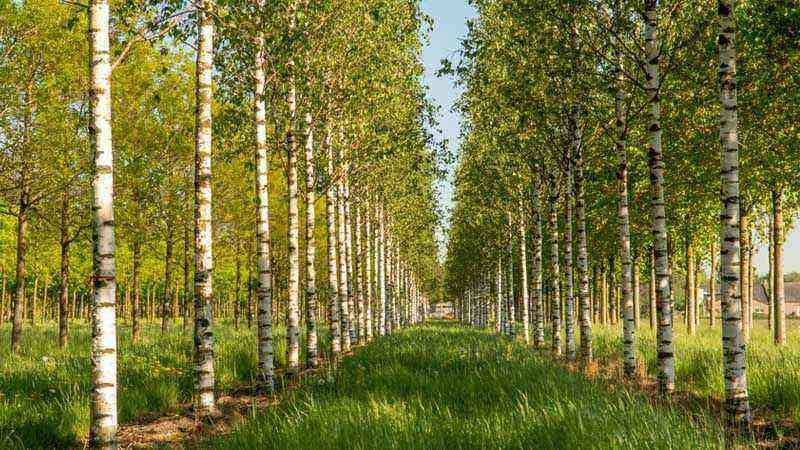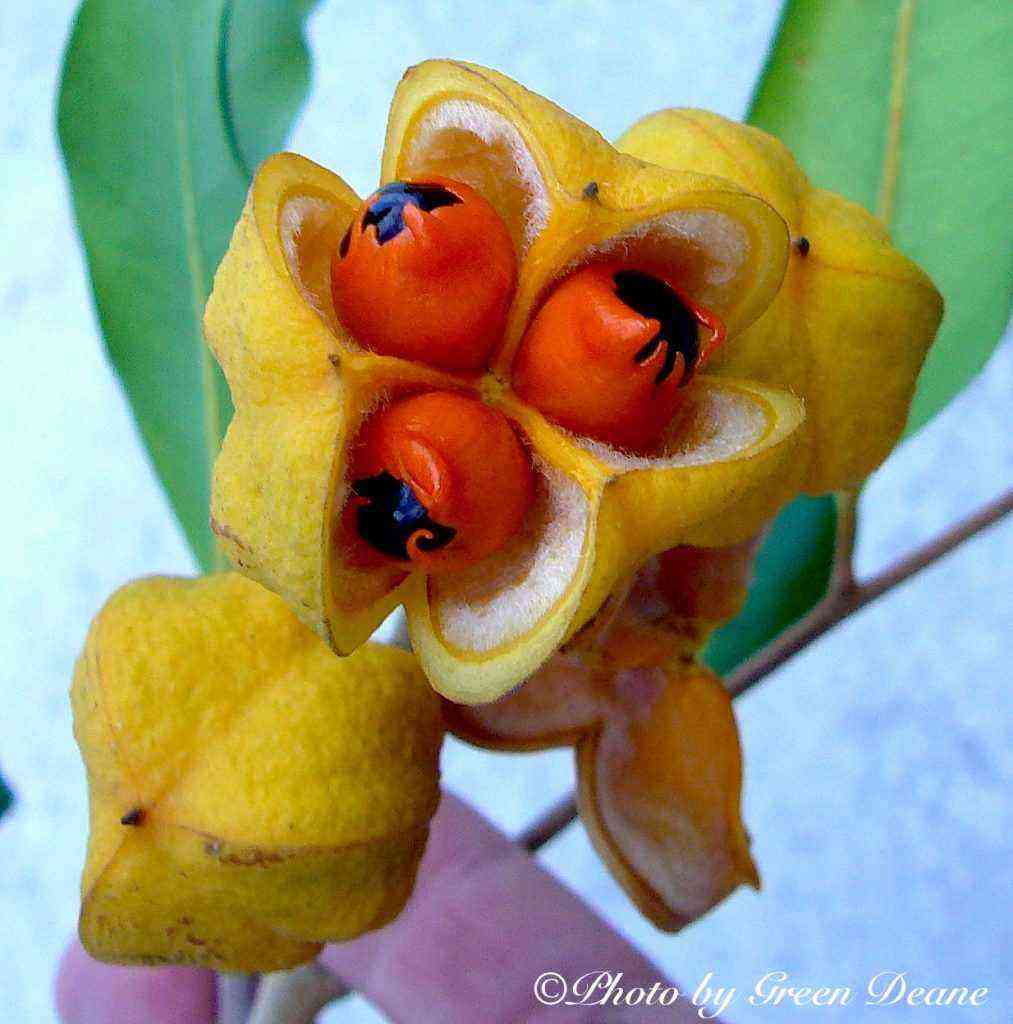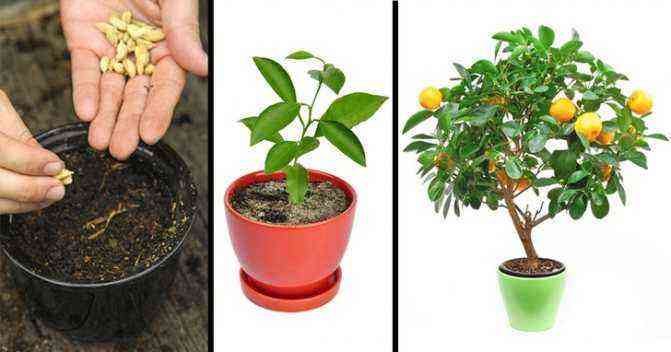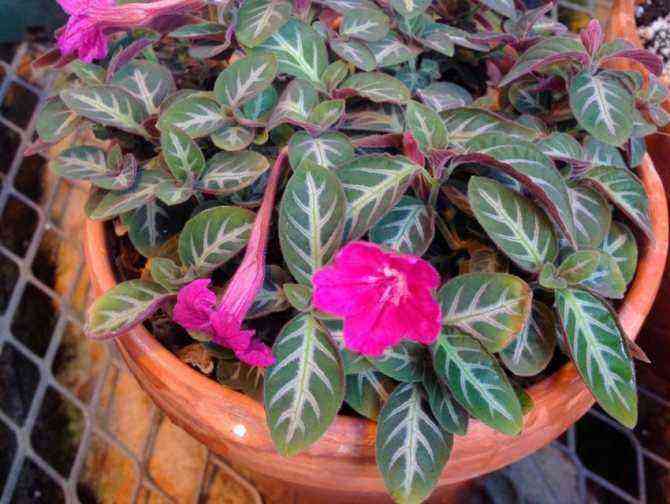This article describes in detail the features of planting fruit trees and shrubs, the rules for choosing and preparing a site, and photos and videos will help you carry out this procedure correctly.
- How to choose a landing site
- Deadlines
- Rules
- Rules
- Terms of planting
Autumn planting principles
Sowing vegetables in the autumn has a number of benefits:
- saving time during spring sowing;
- the ability to harvest the first crop 2-3 weeks earlier;
- you can use seeds that expire this year;
- vegetables and greens grow harder and healthier.
This method also has several shortcomings:
- early germination and death of seedlings;
- planting seeds can only be in light fertile soils;
- if the site is flooded in the spring, most of the plants will die;
- it is advisable to plant only frost-resistant crops.
Choosing a place for sowing, the characteristics of each specific planted crop should be taken into account. In any case, water should not stagnate in this place in autumn and spring, and snow cover should not accumulate during the winter. The furrows in the garden bed should be made less deep than during spring planting, and the seeds for planting should be selected 20-25% larger. They are covered with peat and humus, and covered with spruce branches or straw from above.
Bulbous and small-flower flowers
First of all, of course, we are talking about primroses, which bloom when the snow has not yet melted in the garden in some places – it is clear that the autumn planting period in this case is due precisely to very early flowering periods.
In August-September, flower growers plant:
- crocuses;
- woods (scyllas);
- iridodictium;
- men;
- chionodox;
- Pushkinia;
- erythronium (blood);
- fritillaria (hazel grouse);
- hyacintoids;
- hyacinths;
- daffodils;
- tulips.
In addition, in the fall, it is recommended to plant some bulbous plants with a later flowering period – lilies, alliums (decorative bows), colchicums (colchicum plants). For these crops, spring planting is also permissible, but it must be borne in mind that then flowering in the first year may turn out to be later and weak.
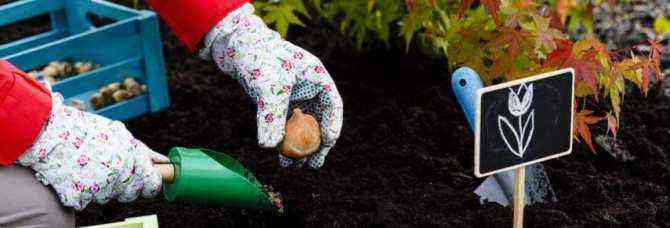
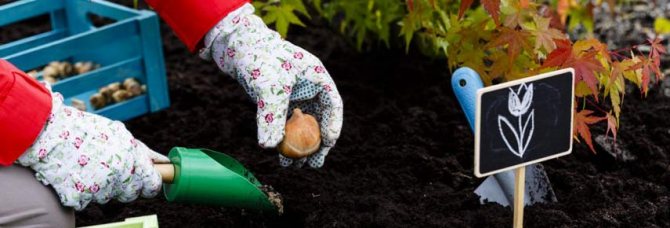
In regions with harsh, frosty winters, it may be better to postpone the planting of bulbous plants, which are relatively heat-demanding – Dutch irises, oriental lilies, and some varieties of hyacinth, until spring. Not every climate is suitable for the autumn planting of freesias, ixia, camassia. To avoid unnecessary disappointments, always check when buying the winter hardiness of those plants with which you first decided to decorate your garden.
When planning a planting, do not forget to look at the weather forecast: where autumn is expected to be warm and prolonged, it is better not to rush so that the bulbs do not germinate ahead of time. And vice versa – if for some reason you missed the recommended planting dates, and the cold is already on the doorstep, do not be discouraged and do not postpone planting until spring. You can plant cold-resistant bulbs until the ground is frozen – it will be much more difficult to keep them at home until the new season.
Tips for planting garlic in the fall
Planting winter garlic has some features that distinguish it from spring activities. In particular, plant garlic 2-3 weeks before the onset of cold weather to a depth of 3-5 cm. Leave at least 15-20 cm between the rows, and 6-10 cm between the teeth. A few weeks before planting, dig the bed to a depth of 20-30 cm and at the same time apply complex and mineral fertilizers. Loose soils with a neutral reaction (sandy loam or light loam) are best suited for garlic.
The optimum soil temperature for planting garlic is 10-12 ° C
Garlic planting bed should be located in a sunny area and at the same time, groundwater should not flow under it. Rotted compost can be added to the soil at the rate of 15-20 liters per 1 square meter and phosphorus-potassium fertilizers (15 g per 1 square meter).
Before boarding cloves of garlic should be pickled in 2-3 hours in a solution of potassium permanganate (0,1%) or copper sulfate (1 tablespoon per 10 liters of water). After planting, cover the beds with spunbond or fallen leaves.
Eggplant, pepper, cucumber, tomato, and cabbage are considered good precursors to garlic.
Compatibility of fruit trees and shrubs when planting
Experienced gardeners have long noticed that some fruit trees and shrubs feel uncomfortable next to other plants or, on the contrary, successfully coexist with them. In the first case, plant roots can be at the same depth and interfere with each other. A situation happens when one of the plants releases substances into the soil that suppress the development of others. Therefore, when planning the planting of fruit and berry plants, do not be too lazy to look at the table of their compatibility (Figure 8).
For example, apple trees can get along with almost any garden crops, except for mountain ash. Red and black currants do not tolerate neighborhoods with each other and with raspberries, since their root system oppresses the neighboring plant. For this reason, it is recommended to plant raspberries in a separate area. Gooseberries cannot coexist with black currants, and they are not friendly with raspberries either.
You will find more information on the compatibility of fruit and berry crops in the video.
Landing onions for the winter
For planting podzimny onions, you should choose a sunny and dry place. Make beds 100 cm wide and 20 cm high. Remove weeds from the soil and disinfect it with a solution of copper sulfate (1 tablespoon per 10 liters of water). Then choose a suitable type of onion, such as Centurion or Stuttgarter. It is advisable to choose bulbs of the first category (up to 1,5 cm in diameter), or wild oats (up to 1 cm in diameter). Depth of landing onions before winter should not exceed 3 cm, otherwise the planting material will rot.
2-3 before planting, the bulbs can be warmed up at the heater
After planting the beds are mulched with cut grass, hay or dry leaves. This must be done until a maximum of October 20 (for the middle lane), so that the plant takes root and gets ready for winter.
It is good to plant onions after cucumbers, tomatoes, potatoes and legumes.
We planted a tree: what’s next?
Immediately after planting, it is imperative to shorten all branches and the center conductor by about a quarter of their length (this, of course, can be done before planting). The fact is that a plant develops correctly when there is a balance between its root system and the aboveground part.
When planting a seedling, its root system is disturbed, the root sucking hairs are torn off, and the seedling does not supply moisture to the top. At the same time, the leaves evaporate moisture as if nothing had happened, so the trunk dehydrates.
Sometimes, after planting, the following picture is observed: they planted a bush or tree, the plant dismissed its leaves and suddenly, for no apparent reason, dried up, despite abundant watering. To prevent this from happening, it is necessary to shorten the aerial part of the plant when planting, that is, to shorten the central conductor and all branches by a quarter of their length. Then the balance between the weakened root system and the aerial part that is too large for it will be restored, and the seedling will take root well.
Throughout the summer, you will put food waste and weeded out weeds on the roots of the seedling and lightly sprinkle them with soil (or sand, peat).
How to plant dill and parsley for the winter
Autumn planting of dill is carried out as late as possible so that the seeds do not germinate ahead of time. Usually this time comes after the first slight frost, i.e. somewhere at the end of October. The seeds are planted in soil and covered with frozen ground. The best plants can be obtained on slightly acidic or neutral loose soil rich in organic matter. The main characteristic of the soil is high moisture content. Dill is sensitive to water and the abundance of moisture allows it to grow better.
Dill planting scheme looks like this: seeds are planted in pre-cut grooves to a depth of 2 cm, leaving 20 cm between rows.Sow 25% more seeds than in spring planting – after all, not all plantings can tolerate severe winters, so it is better to add dill to the soil with a margin.
Parsley and dill do not withstand frosts below -7-9 ° C, so they must be covered immediately
Planting parsley seeds has some peculiarities. In particular, due to the high content of essential oils, they must first be germinated. Place their sprouting in a warm room wrapped in gauze or damp cloth. Then place the sprouted seeds on the bottom shelf of the refrigerator. A week after “hardening” they can be planted.
Seeds are planted in open ground, observing the distance between the rows of 20 cm, and between the bushes – 3 cm.The depth of planting seeds is no more than 1 cm.For sowing, at least one third more seeds should be taken than during spring planting – even if all agricultural practices are followed in spring, not all planted seeds will sprout.
Cabbage and cucumbers are considered the best predecessors of dill and parsley in the garden.
Distance to the border when planting fruit trees
When planting fruit trees on your site, it will be useful to familiarize yourself with the legislative acts of tree planting in order to maintain good neighborly relations. So, the norms stipulate that the distance from a perennial plant to the border of the site should be at least 3 meters for low trees.
The larger the diameter of the crown, the larger this distance becomes, because the branches and roots of a tree that extend beyond your site, neighbors can rightfully remove without your consent. Bushes can be planted at a distance of 1 meter from the border, and plums, peaches, cherries – 2 meters.
Planting beets in the fall before winter
This method is more suitable for regions with short and cool summers. With podzimny sowing, the seeds become more resistant to adverse weather events, and in the spring they give amicable shoots. At the same time, beets are considered to be a rather unpretentious plant.
Place for planting beets you need to choose well-lit and ventilated. When preparing the garden you should thoroughly weed the area and get rid of weeds. Dig it up to a depth of 25 cm and add some ash, humus and phosphorus-potassium fertilizers.
Beet seeds do not need to be soaked, pickled and dried before planting in the ground
Winter beet planting carried out at an air temperature not lower than -5 ° C in dry soil. In the beds, make grooves 3-4 cm deep, the distance between them should be 20 cm. Plant beet seeds in them, covering them with a layer of loose soil from garden soil, sand and compost. After that, the soil should be tamped and covered with fallen leaves, sawdust or needles.
How to care for fruit trees after spring planting?
It is important not only to know how to plant seedlings of fruit trees in spring, but also to provide proper care for young trees. They need to be given special attention in the first two years of life. It is necessary to take care of moderate regular watering and feeding, provide loosening, get rid of weeds. During dry periods, the land near the planted trees periodically needs to be thoroughly loosened.
Do not forget about mulching the trunks. The role of decaying mulch can hardly be overestimated:
- is the guarantor of excellent aeration of the rhizome;
- helps to fight the problem of drying out the soil;
- blocks the germination of weeds;
- prevents the soil from freezing in the winter months;
- young plants receive the necessary organic nutrients;
- reduces the risk of soil crust formation.
Keep in mind, however, that soils that are excessively moist will not mulch.

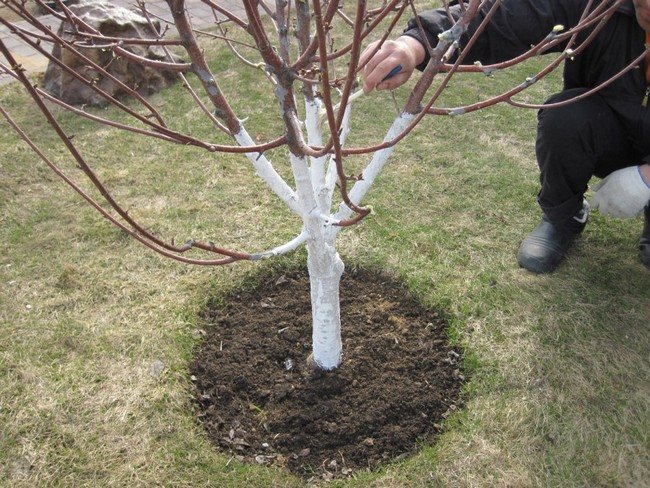
And most importantly, you need to remember: a tree is a living creature and requires a corresponding attitude to itself. Young saplings, like small children, need constant attention and care, receiving the necessary, they will surely please you with a good harvest.
Sowing carrots before winter
Root crops of carrots of autumn sowing often turn out to be larger and tastier than their spring “counterparts”. You can sow carrots in different ways. The main site requirements for podzimney planting of carrots – it should not be located on a slope, otherwise the seeds will simply wash away in the spring, along the way it should be isolated from the winds and warm up well.
For winter sowing of carrots, a special high bed is prepared (15-20 cm), which should stand in this position for 1-1,5 months. For 1 square meter of beds before sowing carrots, 2-4 kg of humus are introduced, 1 tbsp. superphosphate, ½ tbsp. potassium salt. In October, when the bed is saturated with moisture and settles, it should be buried with a rake. After that, you can cut grooves up to 5 cm deep. A distance of 15-20 cm should be kept between the grooves. Then the beds are covered with foil and left in this position until November.
Choose proven frost-resistant varieties, zoned for your region
dry carrot seeds are sown into prepared grooves in the first or second decade of November. The amount of planting material is increased by 20% compared to the spring rate. From above, the seeds are sprinkled with dry earth mixed with sand or peat. Before snowfalls, plantings are covered with spruce branches or cut branches.
Cucumbers, melons, onions and potatoes are considered excellent precursors for carrots.
Preparing a vegetable garden for winter
There is more trouble in the garden in the fall than in the garden. It is necessary to collect vegetables, clear the beds of weeds, prepare the soil for the next season. But we are practically experts! We will act thoroughly!
Harvesting and preparing for storage
Vegetables that need to be harvested in September last longer. In most cases, gardeners are favored by warm and sunny weather. It is possible to collect dry roots and avoid rotting processes. When picking vegetables, be sure to dry them in the sun for several hours., shake off excess soil, sort: large – small, whole – injured.
Collected in September:
- carrot;
- beets;
- potatoes;
- cabbage;
- and a number of other vegetables, depending on the timing of their ripening.
To ensure their long-term preservation, it is worthwhile to provide boxes, preferably wooden. Lay the roots in rows: small at the bottom, large at the top.
Some summer residents sprinkle carrots and beets with sand. Do it or not, you decide. On the one hand, the sand retains moisture, and the vegetable does not deteriorate longer. On the other hand, there are many harmful bacteria and microorganisms in the sand, which cause a rapid decay process if an injured root crop is caught.
How to cover plants for the winter (video)
Cleaning the garden in autumn
- The first step is to get rid of the remnants of cultivated plants. If they were sick, we burn them. Only necessarily in an old barrel or other metal container, but not on the ground. Use ash as fertilizer in the spring.
- We clear the garden from grass. In September, not all weeds bloom, you can catch it if you haven’t done it in some areas.
- We spread rotted manure, peat, compost prepared in advance in the beds – the future fertilizer for plants.
- We disinfect the territory of spring plantings. You can use a solution of potassium permanganate for processing: 10 gr. for 100 liters of water or baking soda: 1 heaped tablespoon for 10 liters of water. Spill thoroughly. Use Fitosporin in the second step. Follow the instructions.
- Change the soil in the greenhouse and greenhouses. Do not want to change – use bleach: 150 gr. by 1 m 2. Such processing is enough not to remember about it for three years.
- Remove the drip irrigation system so that it does not freeze. Remove thermostats from greenhouse doors and windows.
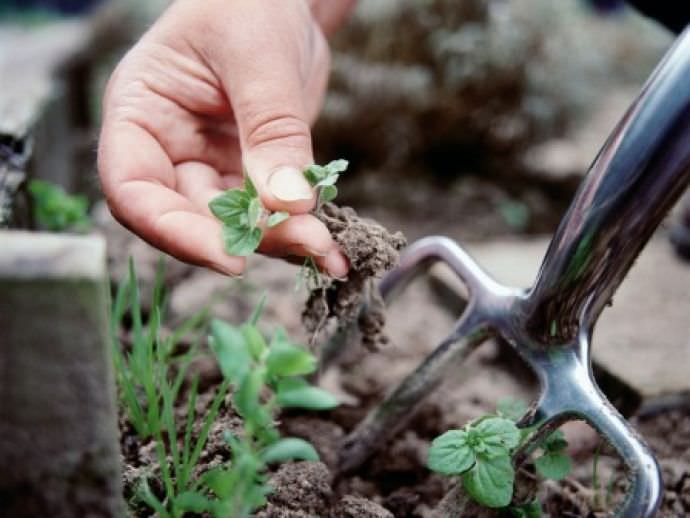
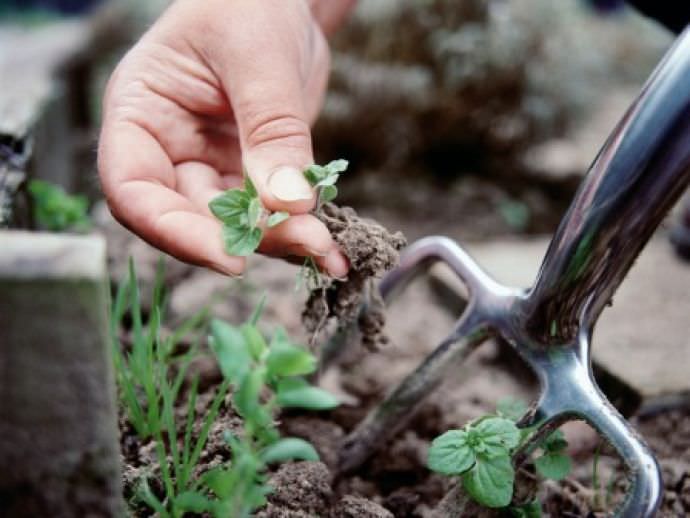
Planting green manure and fertilizing
Sow the cleared field, sow the beds with green manure. Oats, white mustard, rye are widely used in the country. If you have sandy soil on your site, you should not use rye. She will dry up the earth. It is better to sow it on clay and loamy soils. White mustard, on the other hand, is perfect.
After 20 – 25 days, you can mow the tops of useful herbs with a flat cutter or a hoe, and embed them in the ground. Not worth digging up. Siderat roots make a great treat for underground residents: worms and other insects. By eating the lower parts of the plants, they will process them into vermicompost. You will get two benefits: organic fertilizer from tops and loose soil from decay products.
In addition to planting green manure, you can mulch the ground. Suitable mulch:
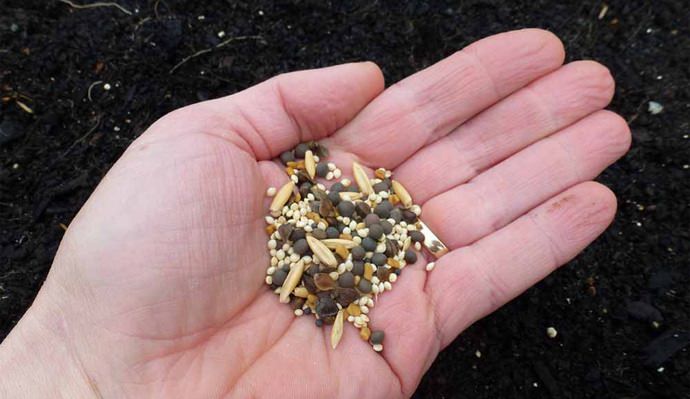
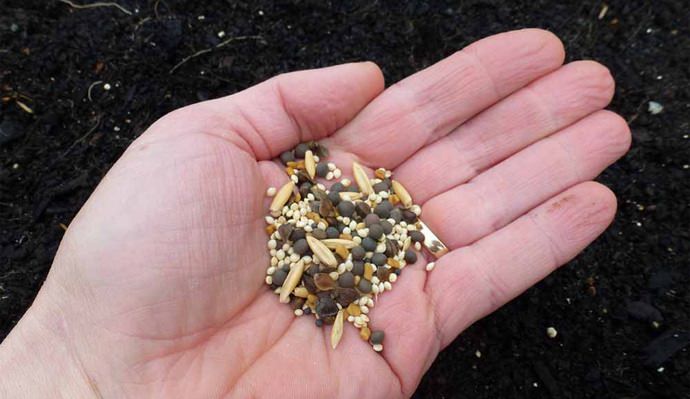
What is the use of mulch in the fall, you ask?
- You will provide the land with natural organic fertilizer.
- Mulch will act as a barrier for melt water to drain, which in spring wash out the top fertile layer of the earth.
- Winter plantings can be preserved under such a “blanket”.
Provided that they grew in your garden in summer and autumn and pleased with flowering marigolds, use them as fertilizer… Grind as much as possible and dig up the ground. When planting flowers in the ground, remember that they will save your future plantings from nematodes, wireworms and the Colorado potato beetle. Marigolds have a frightening aroma. Many insect pests cannot tolerate it and leave such places. This fertilizer will make your site healthier.
Dry some of the “orange” ones. In the spring and summer of the next season, you can make an infusion of them and spray on cultivated plants that are susceptible to the influence of onion flies, aphids, whiteflies and pest butterflies.

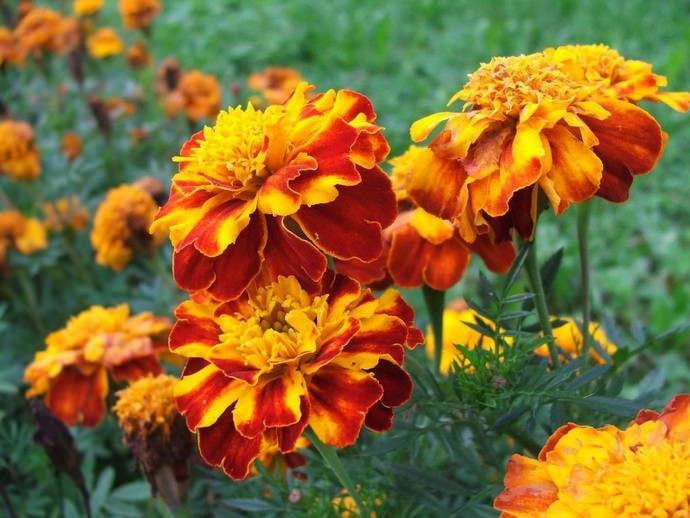
Autumn planting in the garden
What can be planted in the fall before winter? Often these are root crops. Having prepared the beds, you can sow radishes, carrots, beets, onions, garlic in the fall. This should be done before the first frost. Use mulch or spruce branches. If the frosts in your area of residence are severe, prepare a covering material. For planting before winter, carefully select the planting material, disinfect it and, only after the above procedures, plant it in the ground.
Planting sorrel before winter
Sorrel is a frost-resistant perennial that grows well on chernozems and other well-moisturized soils. Humus is introduced into the top layer of the soil, and the earth is carefully harrowed. The seeds are sown in late autumn, with the onset of the first frost. To do this, moisten the soil, and prepare holes for the seeds 1,5 cm deep. Leave a distance of 15 cm between the rows, and 5 cm between the seeds. Level and compact the soil with a rake, and then cover with fallen leaves or snow.
1 g of sorrel seeds contains up to 1 future plants
The best precursors of sorrel are cabbage, dill, lettuce, and radish.
How to plant?
Thinking about planting fruit, do not forget that planting plan should not contradict the general concept of landscape design of the site. It is not at all necessary to place all the trees in one place, you can picturesquely “scatter” them over the site. But in order to take into account all the nuances, it is better to consult with an experienced landscape designer.
And of course, the landing plan should be thought out in advance. Here it is important to keep in mind the composition of the soil, and the illumination, and the distance between trees (in different species and varieties of fruit, the crown and root system grow differently, which must be taken into account, otherwise an adult tree can interfere with the neighboring ones).
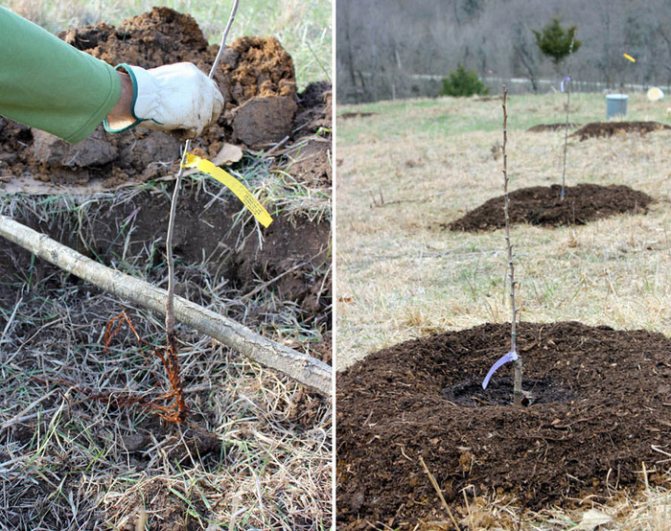
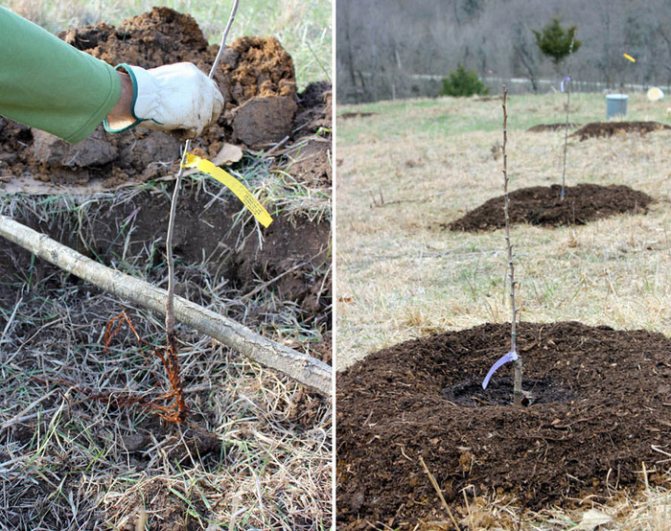
The landing algorithm itself is easy to find on the Internet or other sources. Let us dwell separately on some nuances planting is spring, which gardeners often forget.
- Never use fresh manure for fertilization – it will burn the plant’s root system. The most optimal option here is last year’s manure, fermented or compost. You can also use in-store manure-based fertilizers.
- When you cover the roots with earth, do not forget to straighten them, and also periodically shake the seedling so that voids do not form under the roots.
- The roots should not remain on the surface, but the plant should not be buried too deep. The best option is when the root collar of the seedling (the place where the trunk of the plant passes into the roots) is at ground level.
- It is better to fix the support for the seedling before planting the plant, so as not to damage the roots. Just drive it into the bottom of the hole, and then place the tree so that the support is on its northern side – so it will also protect the young bark of the tree, unaccustomed to the bright sun. Remember that the top border of the support should be below the beginning of the growth of the branches.
- If the location chosen for planting the tree is damp, cover with a mound of soil before planting to prevent root rot.

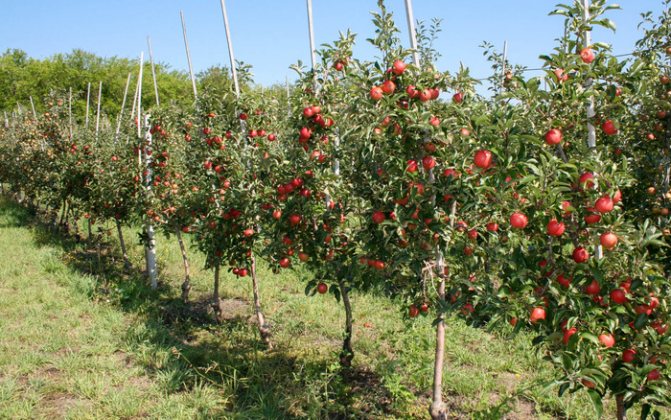
The most important thingWhat is worth remembering is that skill comes with experience. Of course, you can hardly do without mistakes, especially if you are planting a garden for the first time. In this case, before starting work, it is better to consult with an experienced gardener or landscape designer, which is even preferable: a specialist will consider your idea from all sides and find vulnerabilities in it that you most likely do not notice yourself.
In any case, even if you have no one to consult with, in no case give up the dream of your own fruit garden. Draw a planting plan on paper, write down everything that may be important separately, carefully analyze your plan again and go for it! You will definitely succeed.
Winter planting of parsnips
Parsnip is considered one of the most unpretentious crops. It grows well on light loamy and sandy loam soils with good aeration. The site must be well lit, otherwise the yield will decrease by 30-40%. Preparing the beds they begin for planting in the fall, after harvesting the predecessor crop. They are usually raised slightly to create a deep arable layer, and reinforced with planks so that the earth does not crumble.
Parsnips are harvested in the fall, and the testes are used 2,5 months after the root crops are harvested.
Podzimnius sowing of parsnip carry out in slightly frozen soil, using dry seeds. For planting, prepare holes 2-3 cm deep.The distance between them should be at least 10 cm, and between the rows – about 35 cm.
As you can see, during the fall, you can still organize enough garden work related to planting seeds of winter crops. Choose early maturing and frost-resistant varieties and seeds from trusted producers and plant them depending on climatic conditions, and then you can enjoy your first harvest in early spring.
When to plant fruit tree seedlings in spring
Timely planting of seedlings of fruit trees in the spring is important not only for their survival rate, but also for the subsequent growth and development of plants. The question arises when it is better to plant fruit trees and shrubs in the spring.
Since changes in nature occur very quickly, the air temperature rises, the soil dries out quickly, so early spring is considered the best time for the procedure, although in the southern regions it can be done in autumn. However, a crop such as cherry, when planted in autumn, often freezes, so it is necessary to plant it only in the spring. Moreover, the earlier the tree is planted, the better and faster it will take root.
How to choose a landing site
When choosing a place to place fruit crops, you should pay attention to several factors: the depth of the groundwater, illumination and the presence of drafts. So, groundwater must lie at a depth of at least 1 m.Otherwise, trees will have to be placed on hills with a height of 60-120 cm.
It is known that fruit trees need a lot of sunlight and heat, so it would be wise to choose an area that is well lit by the sun, preferably on the south side of the site. In addition, it should be borne in mind that young trees are afraid of drafts, so it is necessary to try to place the young garden under the protection of buildings. Experienced gardeners recommend not planting seedlings in the same place where fruit trees used to grow. The territory of the wasteland left after the uprooting of the garden must be sown with meadow or leguminous grasses for several years or completely change the soil in the pits.
Planting seedlings of fruit trees in spring time
Spring planting should be carried out as early as possible, the definition of which depends specifically on the seedling and weather conditions.
In any case, the work should be completed before the buds bloom on the trees (seedlings). The survival rate and development of culture in the future depends on this.
Planting fruit trees in spring: video
When to plant seedlings of fruit trees in spring and how to do it correctly, you can see in the video clip. Its author will give valuable practical advice on planting, which will certainly be useful for beginners and experienced gardeners.
Variety choice

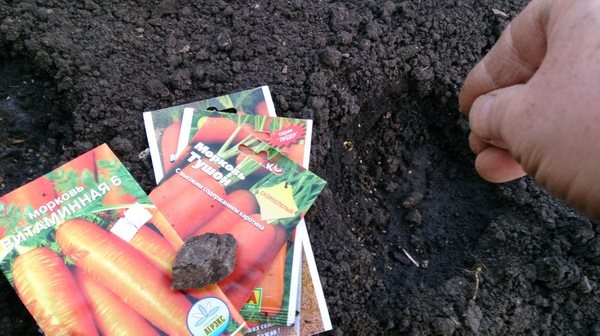
Crops for winter planting are distinguished by good cold tolerance and a short growing season. Suitable vegetables:
| culture | Type / variety |
| Beetroot | Podzimnyaya А474, Cold-resistant-19, General’s, Mulatto-Chocolate, Noble hostess, Siberian flat |
| Cabbage | Middle and late varieties |
| Potatoes | Adretta, Agria, Volzhanin, Svitanok, Nevsky, Krepysh. |
| Garlic | Otradnensky, Gribovsky 60, Gribovsky jubilee, Komsomolets, Danilovsky local. |
| Carrots | Peasant Woman, Red Muscat, Super Carotene, Favorite Mom |
| Radish (radish) | Estuary, Queen of the market, Winter round black and white, Okhotsk, Sugar, Chernavka |
| Greens | Lobelia, petunia |
| Salad | Odessa Kucheryavets and Lollo Rossa, Bunny, Minute, Palette |
| Fennel greens | Amazon, Vityaz, Gribovsky |
| parsley | Appetizing, Mooskrause 2, Green pearl |
